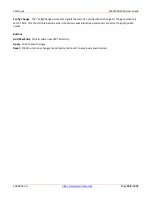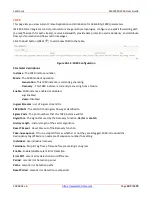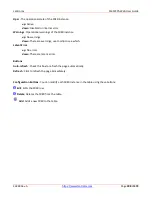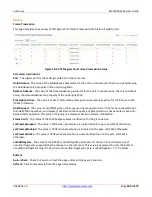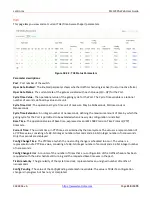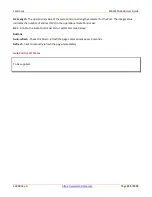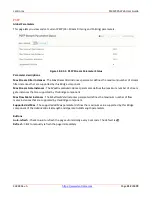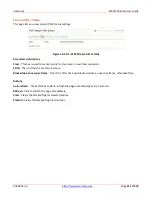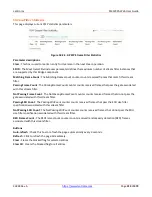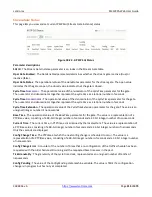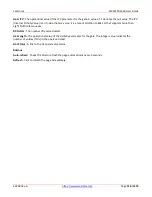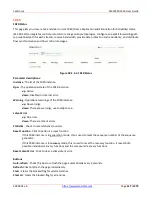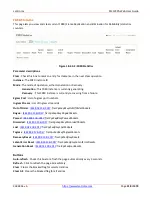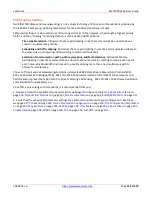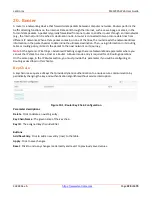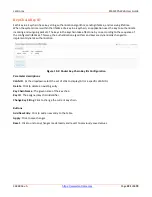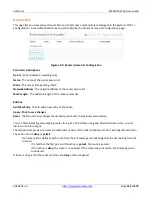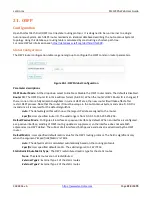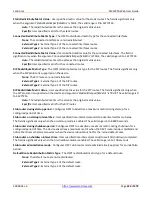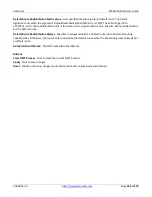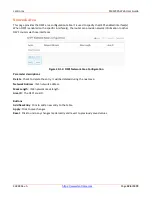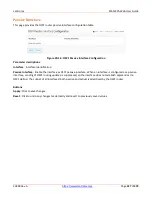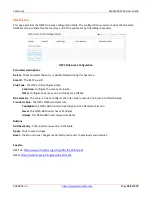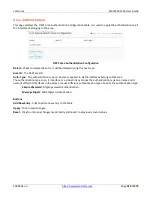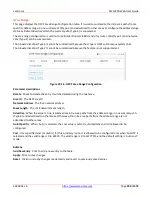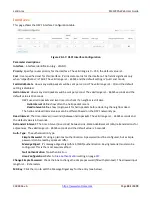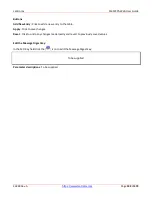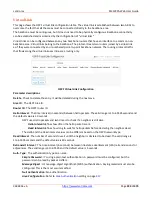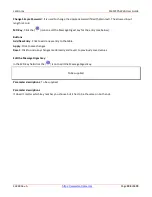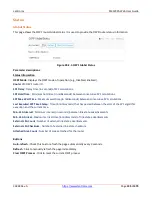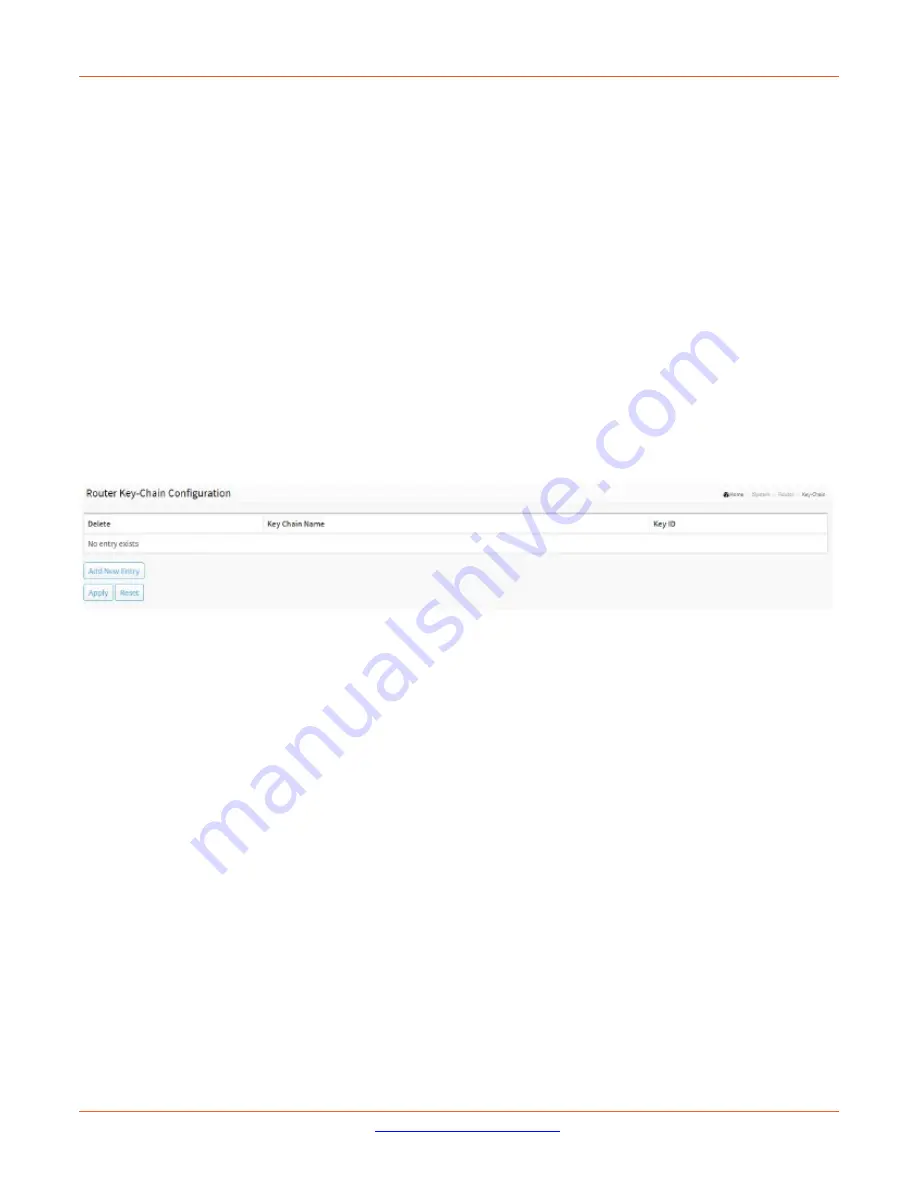
Lantronix
SM12XPA Web User Guide
33848 Rev. A
Page
320
of
473
20. Router
A router is a networking device that forwards data packets between computer networks. Routers perform the
traffic directing functions on the Internet. Data sent through the Internet, such as a web page or email, in the
form of data packets. A packet is typically forwarded from one router to another router through an internetwork
(e.g., the Internet) until it reaches its destination node. A router is connected to two or more data lines from
different IP networks. When a data packet comes in on one of the lines, the router reads the network address
information in the packet header to determine the ultimate destination. Then, using information in its routing
table or routing policy, it directs the packet to the next network on its journey.
Note
:
At the System > IP Settings > Advanced IP Settings page there is a Network Mode parameter where you
can set the IP stack to act as a Host or a Router. A Router mode entry is required for L3 Routing operations.
On the same page, in the IP Routes section, you must provide this parameter if you will be configuring L3
Routing as described in this chapter.
Key-Chain
A keychain is a sequence of keys that provides dynamic authentication to ensure secure communication by
periodically changing the key and authentication algorithm without service interruption.
Figure 19-1: Router Key-Chain Configuration
Parameter descriptions
:
Delete
: Click to delete an existing entry.
Key Chain Name
: The given name of the key chain.
Key ID
: The assigned key chain identifier.
Buttons
Add New Entry
: Click to add a new entry (row) to the table.
Apply
: Click to save changes.
Reset
: Click to undo any changes made locally and revert to previously saved values.

